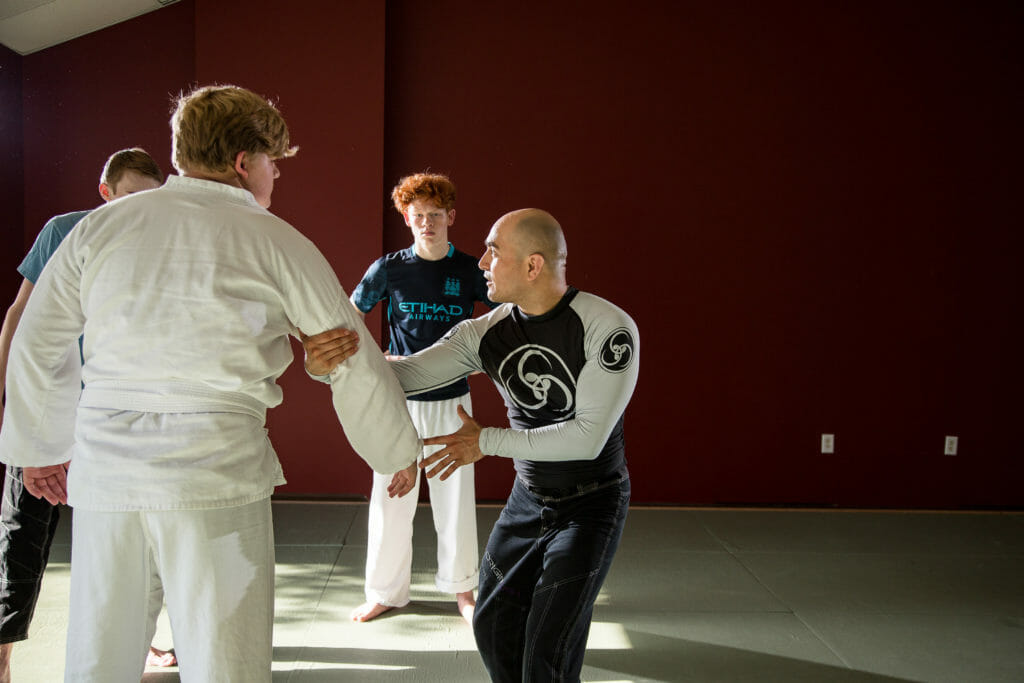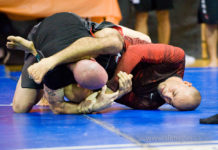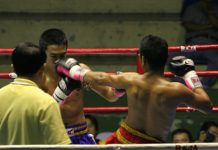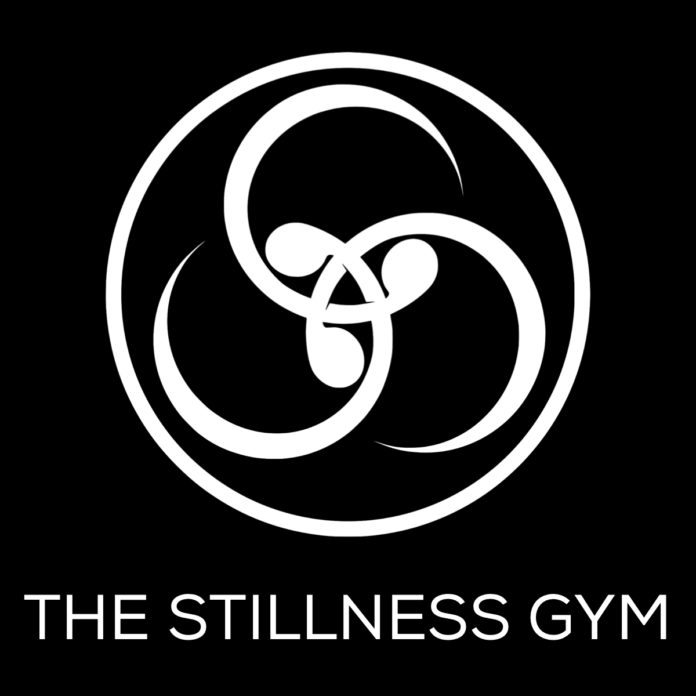Editor’s Note: This article is part of a new “spotlight” series on youjiujitsu, where we showcase academies that are innovating in how they teach jiu-jitsu.
Brazilian Jiu Jitsu is changing. After more than one hundred years, you could argue it’s breakthrough is only just now happening.
Despite its proven effectiveness, it’s been slow to hit the mainstream. Even after the underground success of the Gracie-in-Action videos, or it’s film debut when Mel Gibson triangle choked Gary Busey, BJJ struggled to grow beyond its core 18-34 year old male demographic.
If we’re being honest, the soft art didn’t really come across as soft for a long time. In the 1990’s and early 2000’s, Brazilian Jiu Jitsu was inexorably linked with Mixed Martial Arts. It proudly, and sometimes reluctantly, took on the rough image of MMA.
But now, instructors across the world are re-imagining what a jiu jitsu gym looks like. As a result, we are seeing more people take up the gi than ever before. Especially kids, women, and people over forty.
When you walk into a place like The Stillness Gym in Beaufort, South Carolina, you can see in a nutshell, the new wave of BJJ schools that are changing the way the art is perceived.
Stillness is a clean, well organized school with a systematic approach to jiu jitsu. More than that, Stillness emphasizes a holistic view of training. Their head instructor, Cesar Clavijo, wants his students to be capable of more than fighting.
“The Stillness Gym is a holistic training academy, focused on helping people to be more capable and of greater contribution to people around us, and the planet we rely on.” he says.
I had a chance to talk with Cesar, a Roy Dean brown belt, about his thriving school, his Marine Corps training, and how he and his academy are taking a progressive approach to jiu jitsu.
Let’s start with the basics, where is your school? What is your BJJ background? Could you give us an idea of your school’s identity and mission?
My school is in Beaufort, South Carolina. My Jiu-Jitsu journey began in 2004. I was stationed in a small town, studying Chinese martial arts, when I stumbled across BJJ. I think I saw an ad in Black Belt Magazine or something.
I couldn’t find any academies in my area, so I started with DVDs and VHS tapes, during a time where learning the art this way was heavily looked down upon. On return from Iraq, I found my first academy, where I earned a Blue Belt from Jerry Moreno. When I left that school, it was back to self-study, and I began giving lessons to friends and coworkers.
Early on, I knew that I enjoyed teaching and that I would need more skills if I wanted to make it in this art, so I sought out another teacher. I was eventually accepted as a student by Roy Dean, who promoted me to Purple and Brown and is still my teacher today.
I live far from my teacher though, so most of my training has been with my own students. I’ve supplemented my education over the years by dropping in at academies, attending seminars, taking private lessons, and attending instructor certifications. I’ve been fortunate to learn from a lot of high-level practitioners.
As for my school’s identity/mission, it’s like this: The Stillness Gym is a holistic training academy, focused on helping people to be more capable and of greater contribution to people around us, and the planet we rely on.
What is your personal jiu-jitsu “game” like right now? Do your students tend to reflect that?
My game tends to be reflective of our name. It’s a very calm style. Basics. I tend to play slow, and slow others down.
When you’re a small guy, people look for excuses as to why you dominate them. They’ll sometimes attribute it to youth, agility, strength, etc. But when a small person can dominate experienced practitioners that are bigger and stronger, using basic techniques, and without relying on speed/flow/flexibility, that makes a powerful statement. I’m working on that.

My students have their own games, but I do require them to be able to display certain traits. I don’t believe that students have to become copies of their instructors, but they need to be able to represent where they come from.
How do “eastern methods” factor into your approach to jiu-jitsu? Where did you pick up this emphasis?
I’ve been interested in various styles and philosophies my whole life. I’ve picked things up along the way from my teachers, instructional media, and different organizations I’ve been part of.
Eastern styles often train with longevity in mind. BJJ and other combat sports are typically more concerned with just getting good, as fast as possible. That’s understandable if you’re a serious competitor, but the average BJJ practitioner doesn’t fall into that category.
Eastern styles are often more holistic as well.
BJJ player wants to get stronger. What do they do? Maybe CrossFit/powerlifting/Olympic lifting, etc. Inflexible? Do yoga.
Kung fu student wants to get stronger. What do they do? Kung fu. Inflexible? Kung fu. Recovery work? Kung fu. It’s built into the system: a complete martial art.
BJJ may be a great martial art, and at one time, a complete fighting system (less so in these sport-heavy days), but a complete martial art, with skills to harm, hone, and heal? Never. Well, not yet. I’m working on it, haha.
You’ve produced some great quality videos highlighting women defending themselves using BJJ, do you believe in teaching a separate curriculum for women? Or should their training be like anyone else’s?
I don’t believe in a separate curriculum for women. Both women and men are more likely to be attacked by men, so they’ve got to get comfortable training their techniques against men.
I understand the reluctance of many women to train with men. A lot of people have toxic cultural programming that makes them see Jiu-Jitsu positions as something else. That’s unfortunate, but it’s not hard to overcome. You work up to it at a pace that works for the student.
Mom and Dad aren’t enrolling their daughter because of your sick Honey Hole attacks; they want to invest in her future because you can make her feel safe in her own skin. People want more than skill; they want an experience.
As far as techniques in the curriculum, I do think there are scenarios that tend to be of greater concern to women: being grabbed by the hair, being dragged by the wrist, fighting off someone that’s trying to remove your pants.
Men should also know their way around these situations. It will only enhance their threat awareness and capabilities, and it empowers them to share something valuable with girls and women in their life who might not otherwise pursue Jiu-Jitsu training.
The Stillness Gym has really consistent social media. What percentage of your time do you spend managing that? As a school owner, what is the value of spending that time making videos?
When I make videos or other posts, it’s an outlet for creativity. I really enjoy playing around with content creation. It’s work, but I enjoy it so much that time disappears while I’m at it. It’s a bit like Jiu-Jitsu for me in that way.
I have to be careful though. It’s easy to get sucked in by social media and end up spending too much time trying to get a post right or getting distracted by the feed. Still, I think it’s a worthwhile time investment for school owners.
I find that working on social media helps me to better understand what matters to potential students and/or their families. It also helps them to understand what I have to offer. There’s no shortage of cool Jiu-Jitsu moves online, but when it comes to shining light on the intangible qualities of the art: the practicality, the confidence, the personal transformation…not so much.
Mom and Dad aren’t enrolling their daughter because of your sick Honey Hole attacks; they want to invest in her future because you can make her feel safe in her own skin. People want more than skill; they want to have an experience. Social media is a small window; it can give people a peek into the transformational experience Jiu-Jitsu can offer.
The Stillness Gym seems to pride itself on structure, cleanliness, and aesthetics. I’m sure you’ll take any student who wants to train, but do you have a core customer you’re trying to attract?
Cleanliness is huge. When you and I show up to class clean, and we work together to keep the academy clean, it shows that we care about each other, and respect the environment that we get to participate in.
This is a sweaty, close-contact art. The mat space is a biome that can enhance or endanger everyone’s immune function and overall wellbeing. It’s important that we each contribute to the environment with clean bodies and good bacteria.
I’m trying to attract students that take a long view of things. People that are seeking excellence broadly, want to use their experience with Jiu-Jitsu to enhance other parts of their lives. Don’t be a Black Belt on the mat, and a White Belt in managing your relationships, health, career, etc.
We train for the long haul, and for life off the mat. I want my students to be absolutely legit at 15 years old as well as 55 years old… but without so many of the unnecessary aches, pains, crumpled ears, and taped-up fingers that plague many mats today.
There will always be a mat for the hardcore folks that want to train with killers every day, or the laid-back guys that like to chew gum and lay down while the instructor is teaching… it’s just not our mat.
How do you incorporate sparring into your classes? Do you have rules and etiquette?
We use a variety of training methods when it comes to sparring, depending on the level of student, where we are in our training cycle, etc. Broadly speaking, we will spar a few times per week, but not every class. The rules will change from time to time: one person does light striking, takedowns without grabbing the legs, eyes closed, etc.
Our etiquette is…Western Semi-formal, haha. Although my students and I often respond to each other with “Yes Sir/Ma’am,” I am addressed by my first name, not by a title. Our respect is based on shared humanity, not age or position.
We don’t bow. I’ve trained at so many schools where the rules require bowing, where everyone rushes through their bow, as if it’s an inconvenience. If you aren’t going to put any care into it, why bother?
I want my students to be competent with our culture’s courtesies. Our rolls start with a handshake, as opposed to the casual slap-n-bump. I can’t tell you how many kids and adults struggle to look someone in the eye and give a solid handshake. I aim to fix that.
How do you manage different aggression levels among students?
I put pretty firm limits on what students are allowed to do. I’m not just talking “No leglocks on White Belts.” I mean that when a new student joins, they spend good learning “How to Roll,” long before they get to spar competitively against resistance. I teach my students about understanding when it’s ok to turn up the heat, and with whom, but first, they must learn to manage their own tension and aggression (which is really fear).
If I have to worry about a particular student being too aggressive or hurting someone else (basically, being a bad training partner), they can’t be promoted. If they can’t be smooth, they don’t understand “Jiu,” and are working from, and relying on power/fear instead of technique. I can’t reward that, no matter how “good” they might be at rolling.
You have a black belt in MCMAP, what are the main differences between that curriculum and BJJ?
There are more differences than similarities. MCMAP has a well-constructed curriculum that teaches basic techniques and progresses to more dangerous techniques as rank increases. It’s laid out across a continuum of force that considers situational context and limits martial rank based on the military rank, leadership, and character of the practitioner.
On paper, it’s great. But as we’ve learned from the early UFC, it’s not about the awesome techniques you can list, or even demonstrate; it’s about the training methods. MCMAP is not so strong there.
The first MCMAP belt (Tan Belt) teaches things like basic footwork, strikes (jab, cross, uppercut, hook), basic throws, break falls…enough to make any layperson into a competent fighter. But without intelligent training, you can earn a Black Belt in MCMAP and never gain any real fighting skill. I’d say that it would be very unusual to find someone that is actually skilled, that has only ever trained MCMAP.
You learn a move, you do the form (punch the air, stomp the ground), practice some moves with a partner, and when you can remember and demonstrate the moves, you get a belt.
MCMAP is compulsory and tied to promotions. So…not everyone wants to do it, and a lot of people do it with zero interest in becoming a better martial artist. Being a warrior doesn’t make you a martial artist, and vice versa!
MCMAP emphasizes physical conditioning and does have occasional sparring, but without the highly developed strategy and tactics seen in art like BJJ (positional hierarchy, strategies for establishing positional dominance, etc), the sparring tends to be wild and aggressive. You won’t get much better, but you’ll get tougher. This may not be great by Jiu-Jitsu standards, but toughness is extremely valuable.
In general, Marine training is designed to enhance the ability and willingness to locate, close with, and destroy the enemy. You don’t have to be a skilled martial artist to do that, and for it’s purpose, history shows the training provided by the Corps to be very effective.
What do you think of the modern state of Brazilian Jiu-Jitsu? Do you feel like the art is in a good place? Or headed in the right direction?
I think that the art is heading in several directions at once and that this is generally a good thing.
Some practitioners promote what they think is the “evolution” of the art (with a new flavor each month), while others want to unify federations and Make Jiu Jitsu Great Again by doubling down on tradition.
I think the frequent debates about which is “best” are silly, and proof of just how young this style of Jiu-Jitsu is.
Eastern arts are full of distinct styles within styles. Karate has Ishin Ryu, Shorin Ryu, Uechi Ryu, Shotokan, Kyokushin…the list goes on and on.
The pool is big enough for everyone to do their thing without fighting about the “right” way to swim, but in BJJ, we still argue about who is right.
Ultimately, I see the art continuing to branch out into different styles/ryu, and practitioners gradually learning to accept the differences. It took a while, but 10th Planet was eventually accepted as a legitimate and unique style of Jiu Jitsu. More of that is coming, and I look forward to contributing to the possibilities.
If you have a school you think would be a great highlight for youjiujitsu’s spotlight series, contact us at support@youjiujitsu.com





